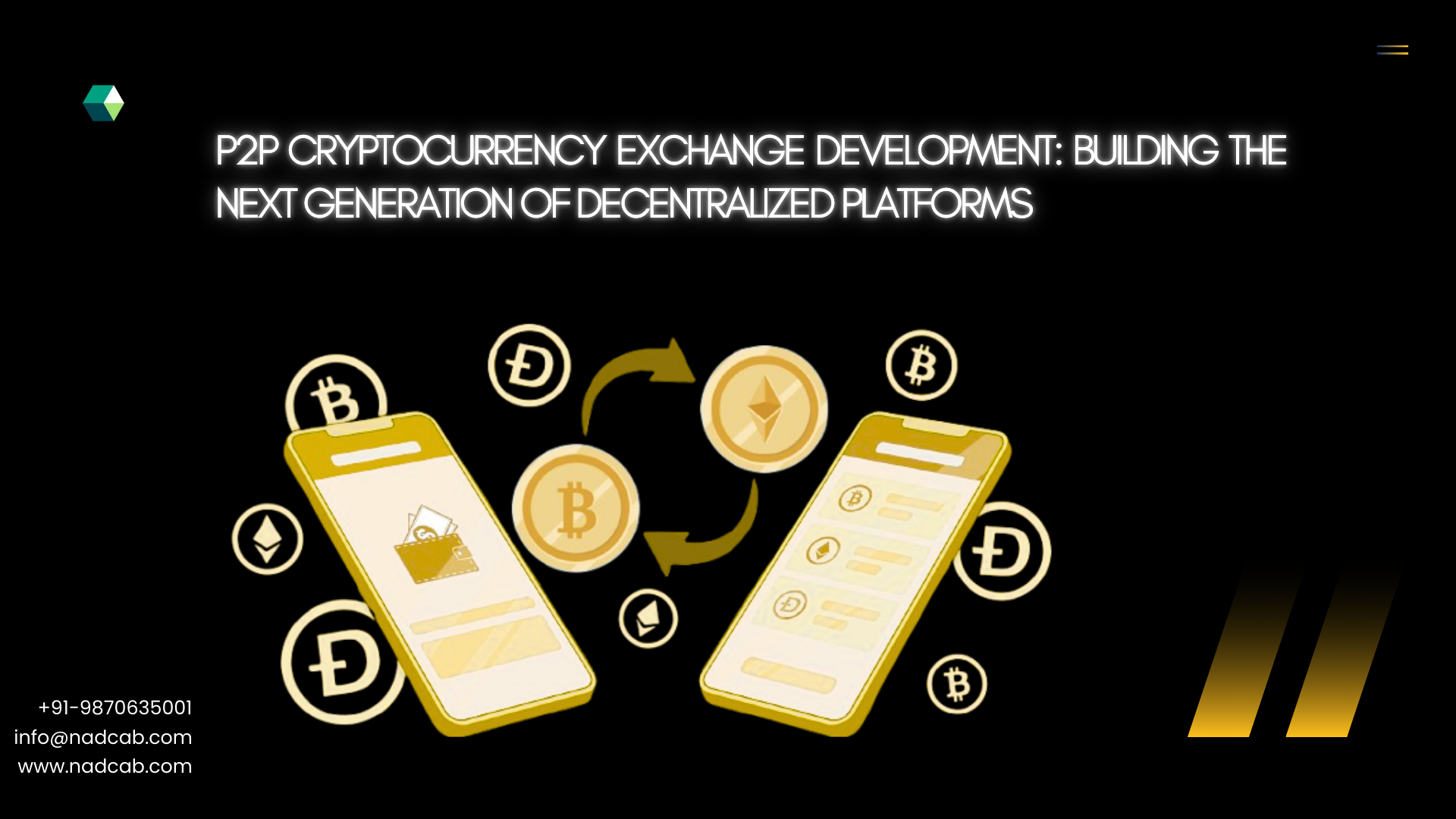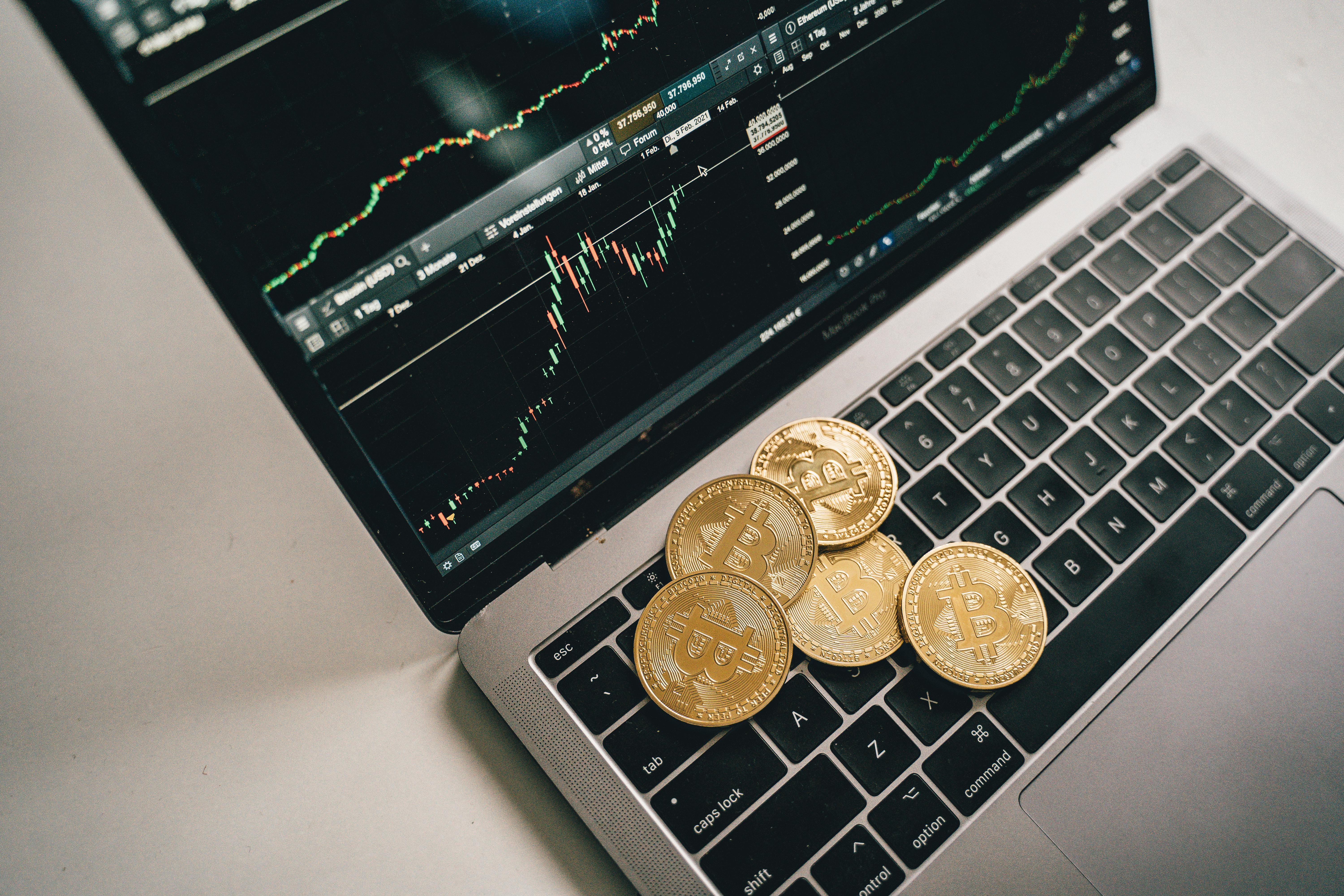P2P Cryptocurrency Exchange Development: Building the Next Generation of Decentralized Platforms

Strong 8k brings an ultra-HD IPTV experience to your living room and your pocket.
The global cryptocurrency ecosystem is evolving rapidly, with decentralization at the core of its transformation. Centralized exchanges (CEXs) have long dominated the crypto landscape, offering liquidity, speed, and convenience. However, they come with drawbacks such as custodial risk, regulatory pressure, and potential misuse of user data and funds.
✍️ Want to understand mining and staking better? Our beginner-friendly crypto guide explains consensus mechanisms like Proof of Work and Proof of Stake in simple terms.
Enter P2P Cryptocurrency Exchanges—the decentralized alternative where users can trade directly with one another without the need for a central authority. As blockchain technology matures and privacy concerns rise, P2P platforms are becoming essential to the next generation of crypto trading.
This article explores P2P cryptocurrency exchange development, covering the benefits, architecture, key features, challenges, and future outlook for businesses and developers seeking to build cutting-edge decentralized trading platforms.
What Is a P2P Cryptocurrency Exchange?
A P2P cryptocurrency exchange allows buyers and sellers to conduct direct transactions with one another. Instead of an order book controlled by the platform (as in CEXs), users list their buy/sell offers and connect with counterparties to execute trades. These trades are usually backed by escrow services and smart contracts, ensuring trustless and secure exchanges.
How It Works:
A seller lists a crypto offer (e.g., 1 BTC for $60,000).
A buyer finds the offer and initiates a trade.
The platform holds the crypto in escrow.
The buyer pays the seller off-chain (e.g., via bank transfer).
Upon confirmation, crypto is released from escrow to the buyer.
This simple yet powerful model forms the basis of decentralized P2P trading.
Why Build a P2P Cryptocurrency Exchange?
1. Decentralization and User Autonomy
Users maintain full control over their assets. Funds are never held by the platform, reducing custodial risk and exposure to hacks.
2. Lower Fees
Without third-party intermediaries, users benefit from lower transaction and platform fees.
3. Enhanced Privacy
P2P exchanges can be designed to minimize user data collection, preserving privacy—a key value in the crypto community.
4. Greater Global Access
People in regions with limited banking infrastructure or where CEXs are restricted can still participate in crypto trading through P2P platforms.
5. Resilience Against Regulation
Since there is no central authority holding user assets or executing trades, P2P exchanges can be more resistant to regulatory clampdowns.
Core Components of P2P Cryptocurrency Exchange Development
Developing a robust and secure P2P exchange requires several components, both on the backend and frontend, along with seamless blockchain integration.
1. User Registration & Identity Verification
Optional or mandatory KYC/AML based on regional requirements.
Integration with identity verification tools like Jumio or Onfido.
2. Crypto Wallet Integration
Non-custodial wallets that users control.
Support for multiple cryptocurrencies (BTC, ETH, USDT, etc.).
Integration with web3 wallets like MetaMask or WalletConnect.
3. Escrow Mechanism
Smart contracts or multi-signature wallets hold crypto during a transaction.
Funds are only released after both parties confirm the trade conditions.
4. Trade Matching System
Allows users to create and browse trade offers.
Filter by payment method, currency, price, and location.
5. Chat System
Enables communication between buyer and seller during trade.
Useful for sharing payment proof or resolving minor disputes.
6. Dispute Resolution Framework
Admins or community-based arbitration can resolve trade issues.
Time-locked escrow ensures funds aren’t held indefinitely.
7. Admin Dashboard
Manage users, track trades, monitor compliance, and resolve disputes.
Analytics on user activity, liquidity, and revenue streams.
P2P Cryptocurrency Exchange Software Solutions
Many companies opt for white-label exchange solutions to reduce development time and cost. These pre-built platforms can be customized with unique branding, features, and integrations.
Advantages:
Quick deployment
Reduced development risk
Pre-tested features
Lower upfront investment
Top Features to Look For:
Modular architecture
Multi-language support
Multi-currency wallets
KYC/AML compliance tools
Escrow and smart contract integration
Mobile responsiveness or native apps
Customization Options:
Payment gateway integrations (bank transfer, PayPal, UPI, etc.)
Token listings
UI/UX enhancements
Referral and loyalty programs
Affiliate marketing tools
P2P Exchange Development Process: Step-by-Step
Creating a P2P crypto exchange from the ground up involves meticulous planning, design, and development.
Step 1: Market Research & Business Planning
Identify the target market (e.g., regions with limited access to banking or crypto).
Analyze existing platforms like LocalBitcoins, Paxful, Binance P2P.
Define your unique value proposition (e.g., privacy-first, fiat integration, specific regions).
Step 2: Platform Design
Design wireframes and mockups for mobile and web platforms.
Prioritize usability, security, and intuitive navigation.
Step 3: Technology Stack Selection
Frontend: React.js, Angular, Vue.js
Backend: Node.js, Django, Ruby on Rails
Database: PostgreSQL, MongoDB
Blockchain: Ethereum, Binance Smart Chain, Solana
Smart Contracts: Solidity, Rust, Vyper
Security Tools: 2FA, SSL encryption, biometric authentication
Step 4: Development
Build core modules: user onboarding, trade engine, wallets, smart contracts.
Test and deploy the escrow mechanism.
Integrate real-time chat and notifications.
Step 5: QA and Security Testing
Conduct thorough functional testing, smart contract audits, and vulnerability assessments.
Perform load testing to handle high volumes of concurrent trades.
Step 6: Deployment and Launch
Deploy on secure cloud servers (e.g., AWS, Google Cloud).
Set up monitoring tools for real-time performance tracking.
Launch a beta version and gather feedback.
Step 7: Marketing and User Acquisition
Use SEO, content marketing, and social media to attract users.
Offer trading bonuses, referral rewards, or zero-fee periods.
Partner with local crypto communities and influencers.
Security in P2P Crypto Exchanges
Security is paramount in P2P platforms due to their open, trustless nature.
Key Security Features:
Escrow protection: Funds are locked during trades.
Two-Factor Authentication (2FA): Adds an extra layer of account protection.
Encrypted messaging: Secures user communication.
Anti-fraud mechanisms: Detect suspicious activities or multiple accounts.
Smart contract audits: Ensure there are no loopholes or vulnerabilities.
Challenges in P2P Cryptocurrency Exchange Development
1. Liquidity Issues
Early-stage platforms often struggle with attracting enough traders to ensure efficient order matching.
Solution: Launch incentive programs, work with liquidity providers, or integrate with decentralized liquidity pools.
2. Regulatory Compliance
Operating in multiple jurisdictions may require legal compliance with local KYC/AML laws.
Solution: Build modular compliance frameworks that adjust based on user location.
3. Trust Between Users
Since trades involve strangers, building trust is a core challenge.
Solution: Implement a reputation system with verified user badges and feedback scores.
4. Payment Fraud
Some users might claim to have paid off-chain when they haven’t.
Solution: Use strict escrow rules and require payment proof within chat before fund release.
Future of P2P Cryptocurrency Exchanges
The P2P crypto ecosystem is poised for massive growth, fueled by privacy concerns, DeFi innovation, and global crypto adoption.
Emerging Trends:
Cross-chain P2P trading: Bridges between blockchains enable direct swapping of tokens without CEXs.
Integration with DeFi protocols: P2P users can access lending, staking, and yield farming.
Decentralized identity (DID): Verifies users without sacrificing privacy.
AI-powered fraud detection: Automates risk monitoring and suspicious activity alerts.
Mobile-first experiences: As crypto adoption rises in mobile-centric regions, mobile-first design is crucial.
Conclusion
As the crypto world continues to move toward decentralization, P2P cryptocurrency exchanges are becoming a cornerstone of the new financial infrastructure. They empower users by giving them full control over their assets, reduce reliance on intermediaries, and enhance privacy and global access.
Whether you're a startup, investor, or blockchain developer, entering the P2P Exchange market presents a timely and promising opportunity. With the right mix of technology, strategy, and innovation, you can build a secure, scalable, and successful platform that serves the next wave of crypto traders.
Note: IndiBlogHub features both user-submitted and editorial content. We do not verify third-party contributions. Read our Disclaimer and Privacy Policyfor details.







